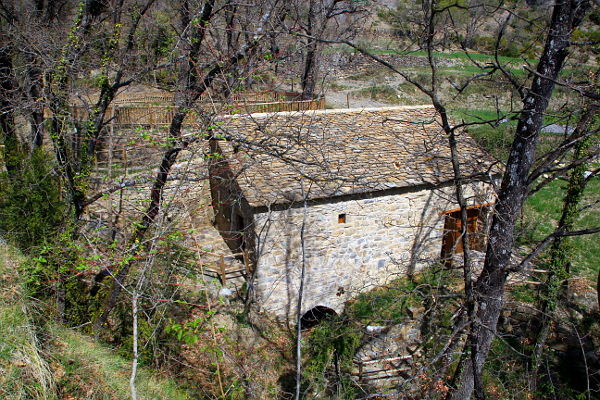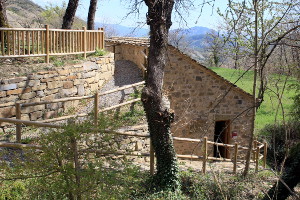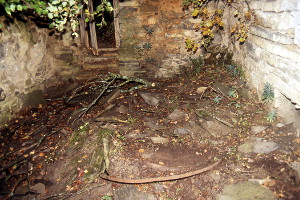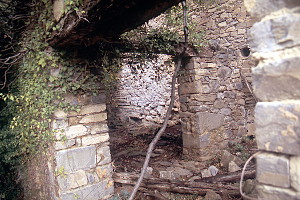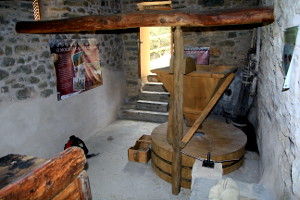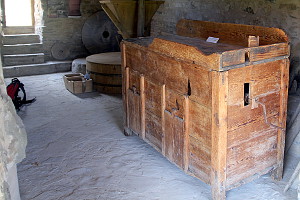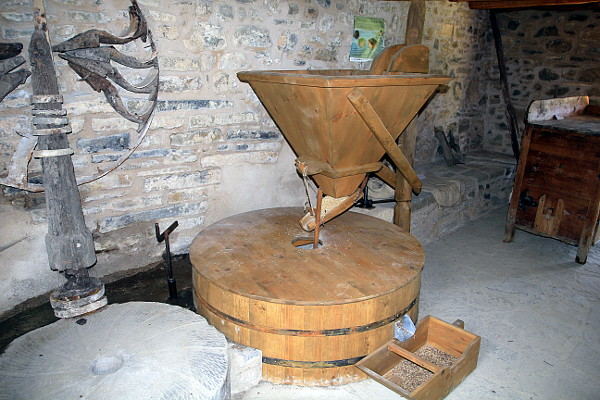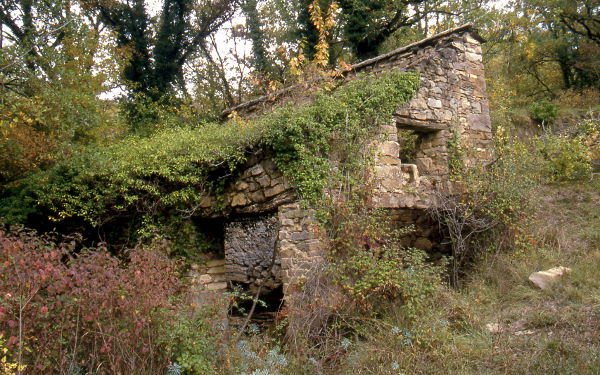The main exhibitions are a milling unit (7) and a bolting machine (6).
The configuration is rather weird with the stone casing immediately on the floor. But everything is there
and ready to run for demonstration purposes: notice the controls to manage the valve and the aliviador.
This type of feeder system with a swivelling hopper and a feed-shoe (
canalete) is a rarity in
the wide region. I've only seen the type in Lacabezonada — a real gem, not very far away and also at the foot of the Sierra Ferrera — and a related type with the hopper fixed to a wall
in
Ainielle (Sobrepuerto). There is no crane and I couldn't spot a point
suitable to tie on a rope either. So probably no plans exist for a dressing party any time soon.
The second piece proudly displayed is a bolting machine (
cernidor, 6) in a rather good condition and complete apart from the feeding-mechanism.
The long side features two large doors which means that the meal was bolted into two fractions.
The restfraction (
salvado) appeared through a smaller door at the back (7).
We've seen
a similar type in Javierre de Olsón, but making three fractions instead
of two. Three fractions plus salvado also in the mill of Castigaleu but there the
flour comes out at the bottom through holes closed by sliding valves. The feeder is still in place.


